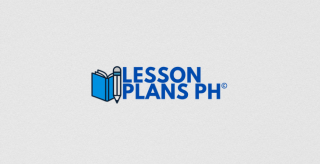DAILY LESSON LOG in EMPOWERMENT TECHNOLOGIES 11 (1st Quarter)
I. Objectives:
LC: Apply online safety, security, ethics, and etiquette standards in the use of ICTs as related to specific tracks.
At the end of the lesson, the learners should be able to:
- Name the various online threats and explain how they affect our daily digital lives.
II. Content: Online Safety, Security, Ethics, and Etiquette
III. Learning Resources:
- Empowerment Technologies – Grade 11/12 SLM, Quarter 1 – Module 2 (2020)
- News articles, real-life case studies, video clips on cyber threats, ICT posters
IV. Procedures:
A. Reviewing previous lesson or presenting the new lesson:
- Ask:
- “When you go online, what do you usually do?”
- “What do you think are the dangers in those actions?”
- Scenario: “Imagine someone pretending to be you on social media. How would that affect your life?”
- Explain the importance of today’s topic: Online Threats.
B. Establishing a purpose for the lesson:
- “By the end of this lesson, you should be able to identify common online threats and know how to protect yourselves from them.”
C. Presenting illustrative examples/instances of the lesson:
- Use multimedia to show real-life examples:
- Phishing emails
- Fake job offers
- Identity theft cases
- Explain each threat with simple, relatable examples.
D. Discussing new concepts and practicing new skills #1:
- Group Activity: “Threat Spotters”
- Each group analyzes a case (e.g., phishing, malware, cyberbullying, identity theft).
- Use a chart: THREAT – EFFECT – SOLUTION
E. Discussing new concepts and new skills #2:
- Group presentations with probing questions:
- “How could this have been prevented?”
- “What did the victim do wrong/right?”
- “Can this happen in your future profession?”
F. Developing mastery (guides formative assessment):
- Individual Activity: “Digital Defense Poster”
- Choose 3 online threats and create a mini-poster showing how to avoid each one.
- Include a catchphrase and image for each threat.
G. Making generalizations and abstractions about the lesson:
- Ask:
- “What have I learned about online threats today?”
- “How do these threats affect not just individuals but entire communities?”
- Summary: “Online threats can harm reputations, finances, and emotional well-being. Awareness and proactive behavior ensure digital safety.”
H. Finding practical applications of concepts and skills in daily living:
- Ask:
- “How will you act differently online after today’s lesson?”
- “In your chosen track, how important is online reputation?”
- Examples:
- Scholarship rejection due to offensive posts
- Online seller hacked due to weak password
I. Evaluation of Learning:
- Identify and define:
- Phishing
- Malware
- Cyberbullying
- Identity Theft
- Copyright Infringement
J. Additional activities for application or remediation:
- Reflective Journal: “Describe one action you used to do online that violates online safety, ethics, or etiquette. What will you do differently now?”
- Remedial Option: Watch a video on online safety and complete a worksheet.
(alert-passed) This lesson plan promotes digital responsibility, critical thinking, and real-world application. Teachers are encouraged to use current events and student experiences to deepen understanding.
V. Teacher Notes:
- Prepared by: Elmar B. Agtarap
- Checked by: Vivien G. Arances
- Observed by: ___________________________

.png)
